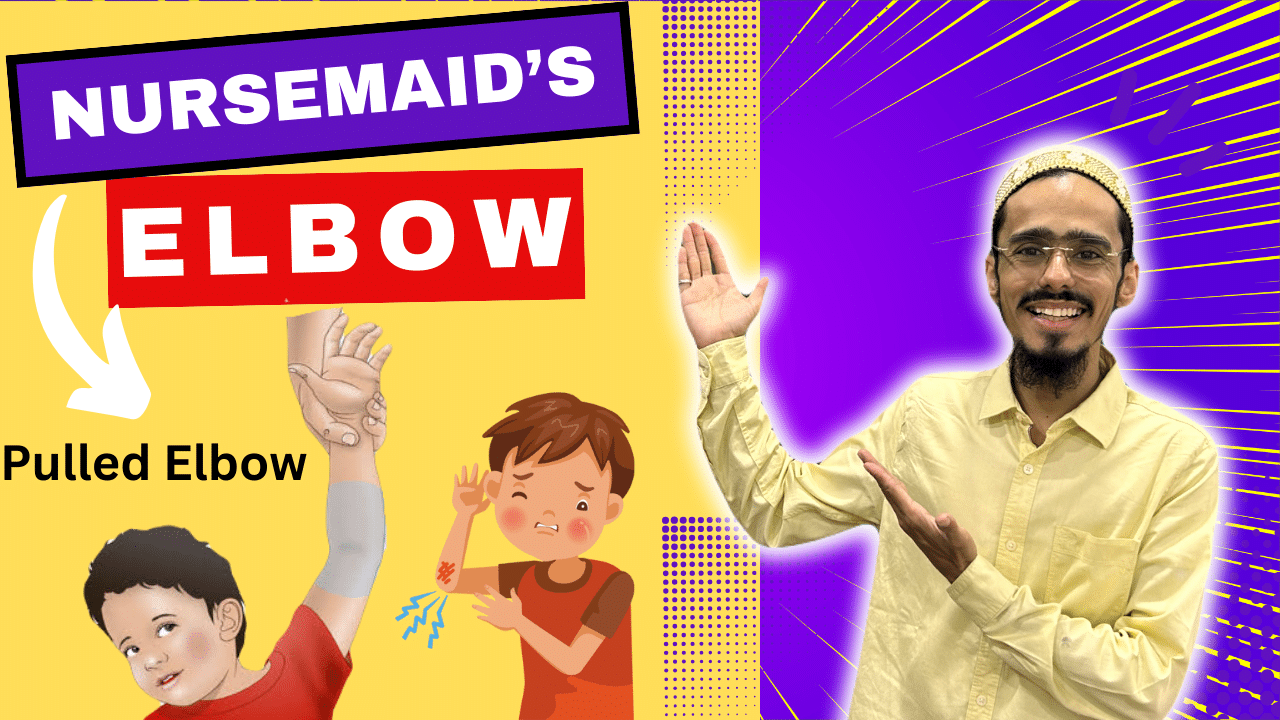Introduction – Nursemaid’s Elbow: Treatment and Prevention
Nursemaid’s elbow, also known as pulled elbow or radial head subluxation, is a common childhood injury
That can be both painful and concerning for parents.
Although it is not typically a serious condition, understanding its causes, symptoms, treatment, and prevention is crucial to ensure the well-being of children.
In this article, we will delve into the details of nursemaid’s elbow, shedding light on what it is, how it occurs, and how to manage and prevent it.
What Is Nursemaid’s Elbow?
Nursemaid’s elbow is a condition that primarily affects children, usually between the ages of one and four.
It occurs when the radius bone head in the forearm slips out from its normal position at the elbow joint.
This dislocation can cause discomfort and pain, making it difficult for the child to use their arm.
Fortunately, nursemaid’s elbow is not associate with long-term complications or permanent damage when address promptly.
Causes of Nursemaid’s Elbow
The main cause of nursemaid’s elbow is a sudden pulling or yanking of the child’s arm, especially the hand, while it is extend.
This injury is most commonly associate with activities like swinging a child by their arms, lifting them by the hand, or pulling them up abruptly.
In some cases, it can even happen during harmless play.
Symptoms of Nursemaid’s Elbow
Nursemaid’s elbow presents a distinctive set of symptoms, including:
- Pain: The child may experience immediate pain around the elbow area, making them reluctant to use the affected arm.
- Limited Mobility: Children with nursemaid’s elbow typically avoid moving or using the affected arm due to the discomfort and pain.
- Holding the Arm Close to the Body: The child may keep the injured arm close to their body or against their chest.
- Refusal to Use the Arm: Children might refuse to use the injured arm altogether, causing them to perform tasks with one hand.
- Crying or Irritability: Pain and discomfort can lead to crying or irritability in the child.
nursemaid elbow treatment
how to fix nursemaid elbow – When a child exhibits symptoms of nursemaid’s elbow, it is essential to seek prompt medical attention.
In many cases, a healthcare provider can diagnose and treat the condition quickly and effectively.
The treatment generally involves the following steps:
- Evaluation: The healthcare provider will perform a physical examination to assess the child’s condition and rule out any other possible injuries.
- Reduction: Reduction is the process of maneuvering the displaced bone back into its proper position. The healthcare provider will perform a gentle, controlled manipulation of the child’s arm to achieve this.
- Relief: Once the bone is back in its correct place, relief from pain and discomfort is typically immediate.
It is important to note that while healthcare providers are trained to perform this procedure, it should not be attempted at home. Self-treatment or delay in seeking professional help can lead to further complications.
Preventing Nursemaid’s Elbow
Preventing nursemaid’s elbow is a key concern for parents and caregivers. Here are some tips to reduce the risk of this injury:
- Educate Caregivers: Ensure that all caregivers are aware of the condition and its causes, emphasizing the need to be gentle when handling a child’s arms.
- Lift with Caution: When lifting a child, do so by supporting their torso and underarms rather than pulling or lifting them by their hands or arms.
- Teach Proper Play: Educate older siblings and playmates about the potential risks and the importance of playing gently with younger children.
- Supervision: Keep a watchful eye on children during playtime to intervene if rough or risky behavior is observed.
- Avoid Rough Play: Discourage activities that involve sudden, forceful pulling or yanking of a child’s arms.
Conclusion – Nursemaid’s Elbow: Treatment and Prevention
Nursemaid’s elbow is a common childhood injury that can be painful and distressing for both children and parents.
However, with early recognition, proper treatment, and prevention measures, the condition can be managed effectively.
Parents, caregivers, and older siblings should be educated on the causes and risk factors
And everyone should be vigilant to ensure children’s safety during playtime. By taking these precautions
we can help children grow up healthy and happy, free from the discomfort of nursemaid’s elbow.
